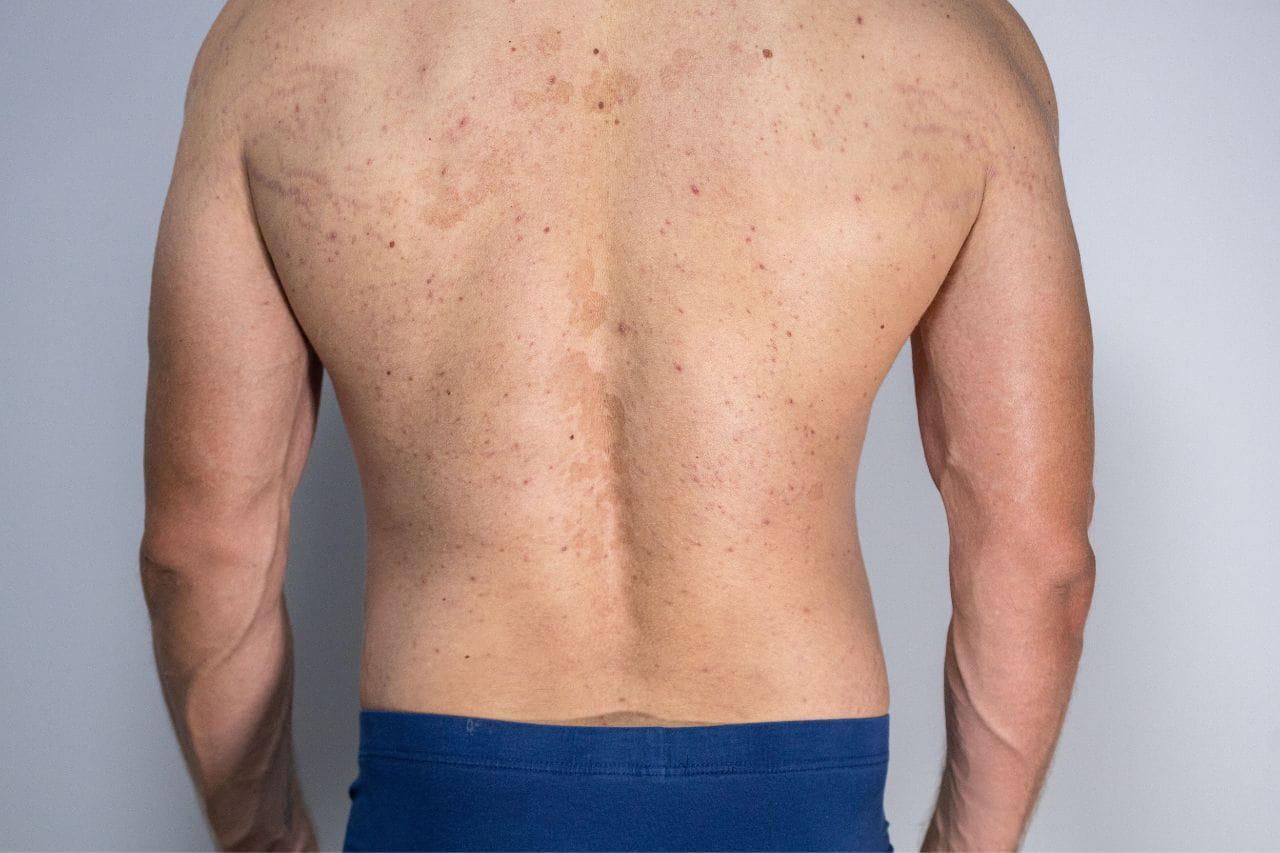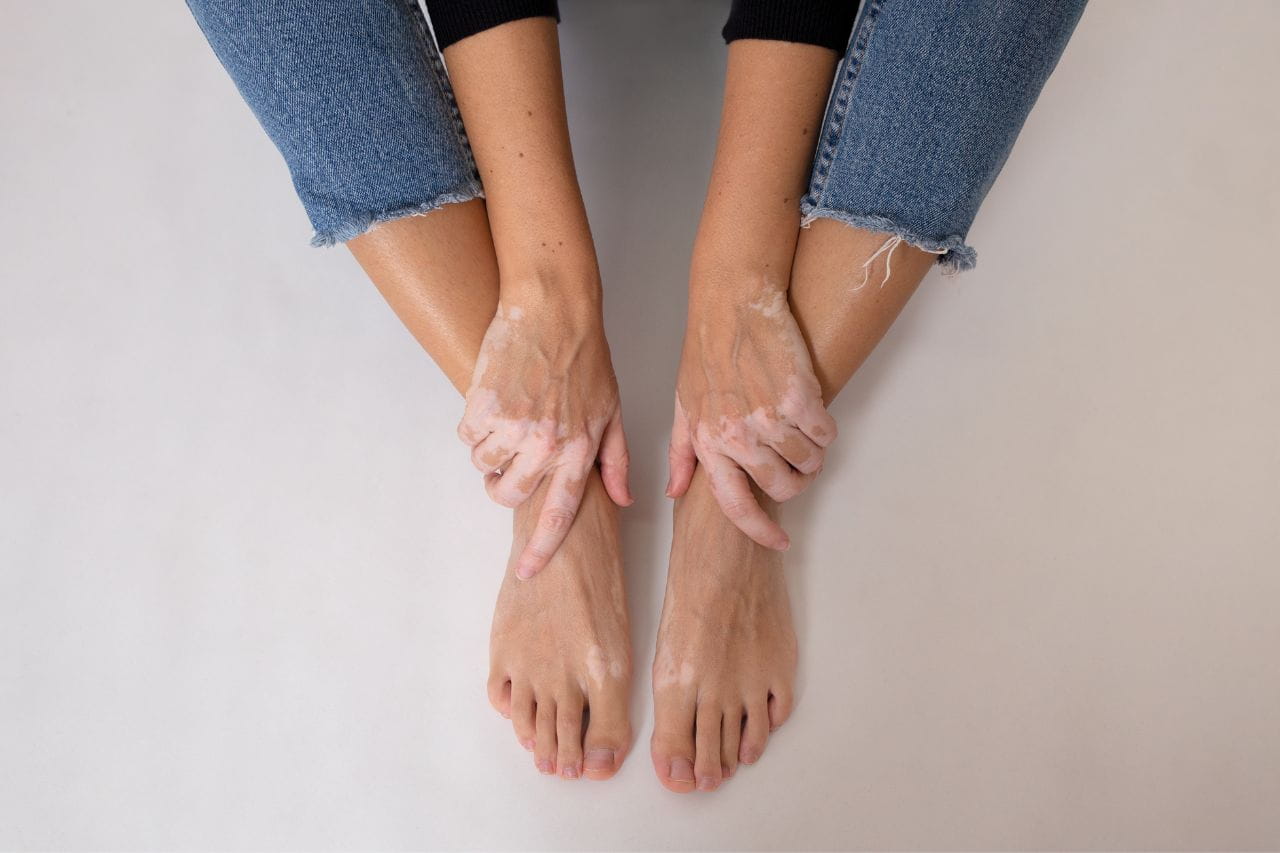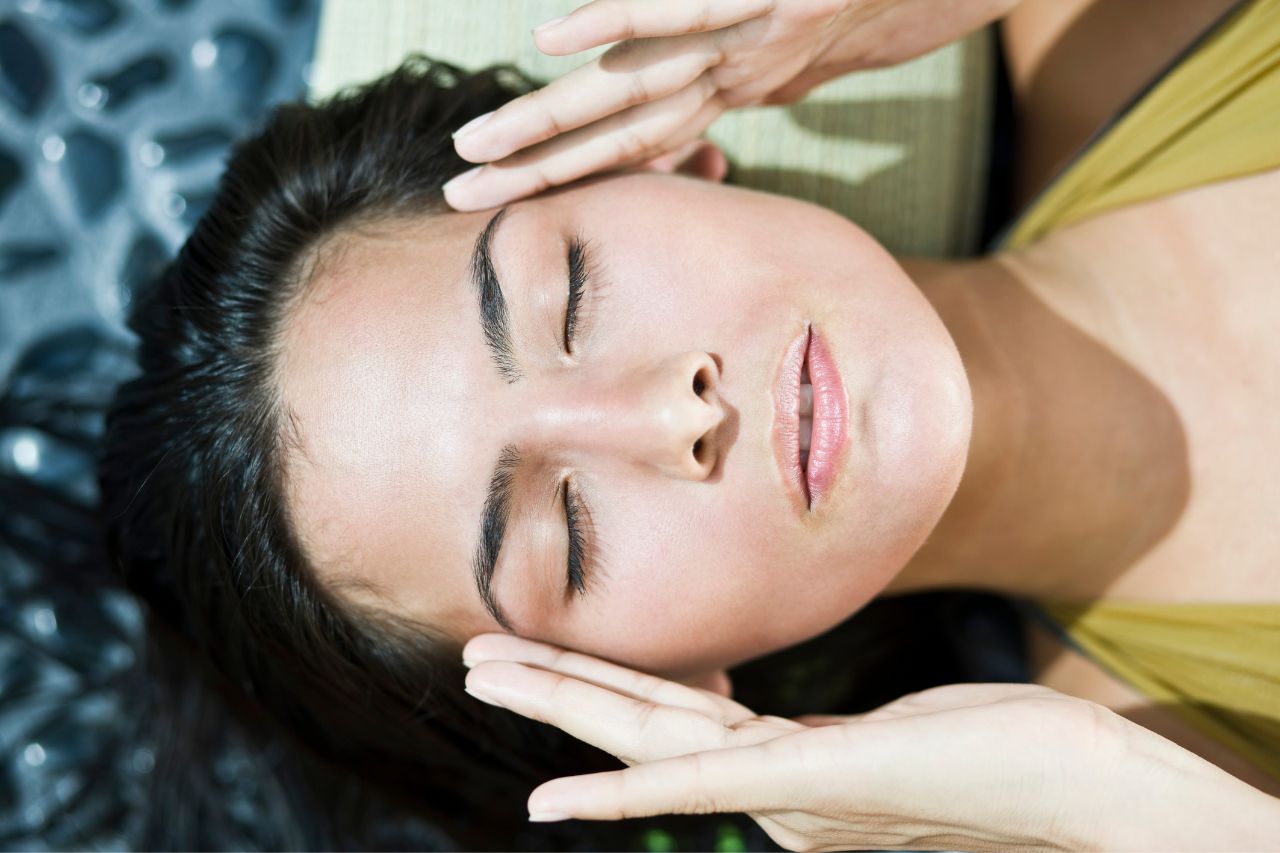Tinea Versicolor

What Does Tinea Versicolor Look Like?
Tinea versicolor causes small round patches of skin to change color. More often, the patches become lighter than the surrounding skin, but they can be darker.
When you observe them up close, the spots may appear white or tan (on darker skin), pink or red (on lighter skin), brown, or yellow. The skin in the area can get dry and scaly. Over time, the spots expand and connect. Sun exposure may cause light areas to appear lighter as the surrounding skin tans.
Other tinea versicolor symptoms include:
- Itching of or around affected skin
- Skin patches that don’t tan
- Excessive sweating
Tinea Versicolor Risk Factors
Anyone can develop tinea versicolor, and it’s unclear why the yeast overgrowth develops. However, people in subtropical and tropical climates have a higher risk.You may also have an elevated risk of tinea versicolor if you have a weakened immune system, have diabetes, take corticosteroids, or have naturally sweaty or oily skin. Hormonal changes during pregnancy may also increase your risk.
How Is Tinea Versicolor Diagnosed?
Doctors diagnose tinea versicolor with skin tests. They scrape off loose skin cells in the affected areas and examine the sample under a microscope to look for excessive yeast cells. Your doctor may also use a Wood lamp — a device that emits ultraviolet light and causes affected skin to look yellowish or greenish.Tinea Versicolor Treatment
You can treat mild cases of versicolor with over-the-counter antifungal products like shampoos, creams, and lotions. For moderate infections, your doctor can prescribe prescription-strength topical medications. And if your case is severe, you may need oral antifungal medication.Even with treatment, it may take several weeks or months for your skin to return to its normal color. But most people fully recover from the infection.
How to Prevent Tinea Versicolor
Tinea versicolor is caused by yeast that’s naturally found on your skin. The key to avoiding infection is keeping that yeast in check. You can do that by:
- Minimizing your exposure to sunlight and heat
- Wearing sunscreen if you’re out in the sun
- Avoiding excessive sweating
- Wearing loose-fitting, breathable fabrics to reduce sweating
If you’re prone to tinea versicolor, your doctor may recommend using a medicated soap to prevent yeast overgrowth.
Preparing to See Your Doctor
If you’re seeing your doctor about tinea versicolor, you should prepare for your appointment by ensuring your skin is clean and not covered by lotion, makeup, etc.
You may also want to have a list of questions ready if you’re unfamiliar with the condition. This can include things like:
- How did I get tinea versicolor?
- Do I need tests to confirm I have it?
- What treatment do you recommend?
- Does body lotion worsen tinea versicolor?
- Is there a generic alternative to the medicine you’ll prescribe?
- How long will it take for my skin to return to its typical color?
- Is there a good place online to go for information on the condition?
Get Help with Tinea Versicolor from Baptist Health
If you think you might have tinea versicolor or know you do and over-the-counter treatments aren’t working, Baptist Health can help!Your primary care doctor can diagnose your condition and recommend over-the-counter or prescription medication. If appropriate, they can also refer you to a dermatologist for treatment.



